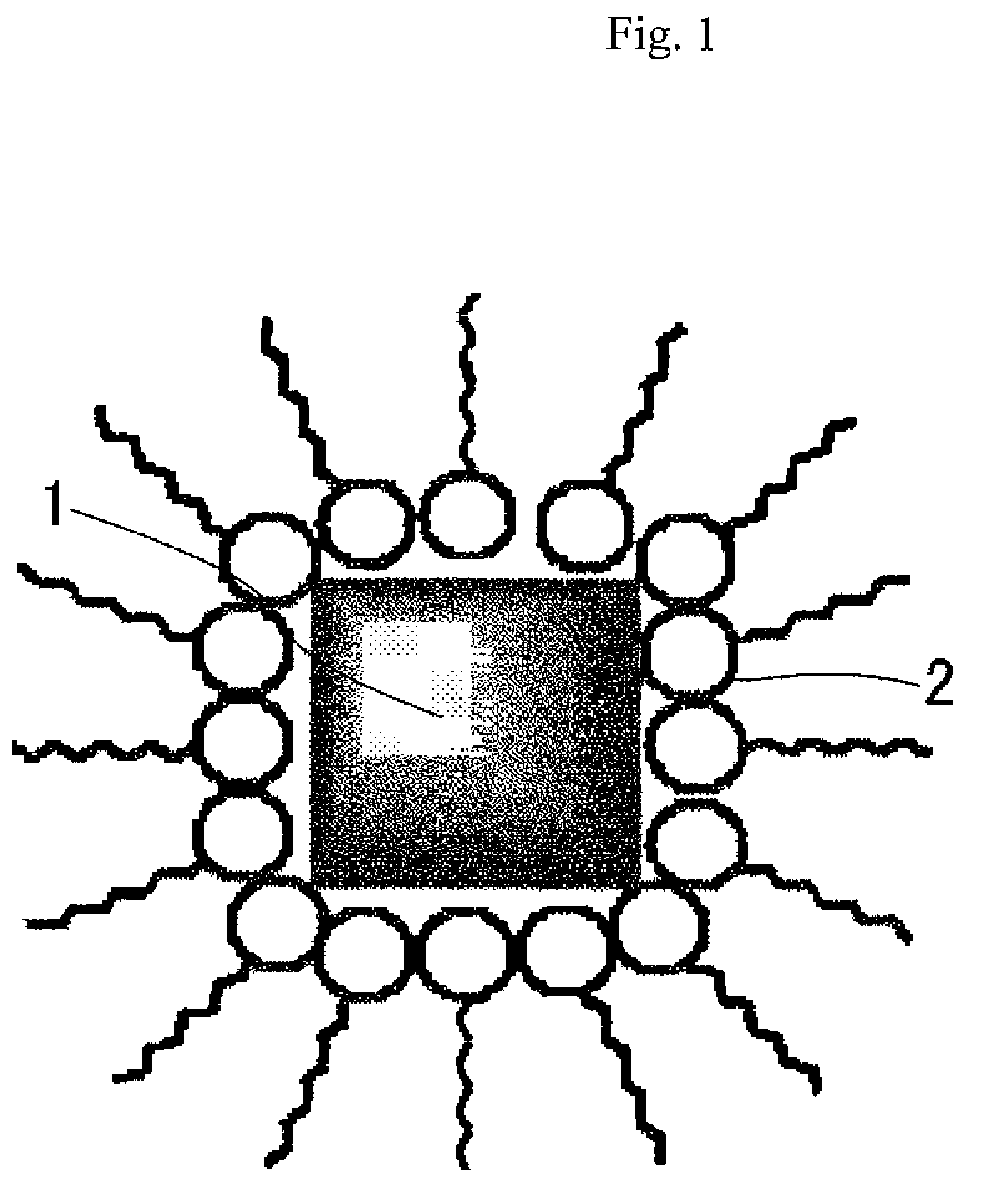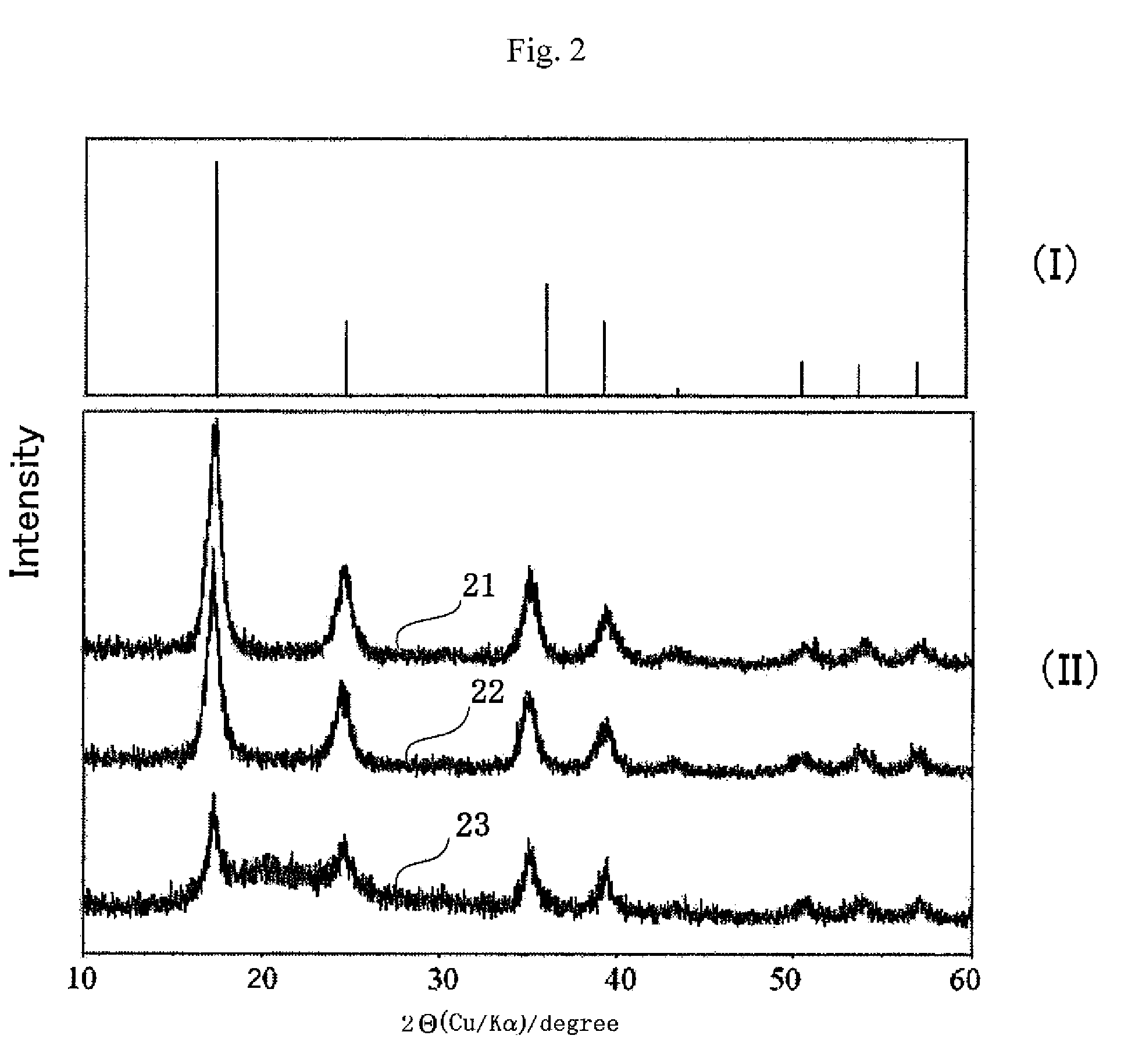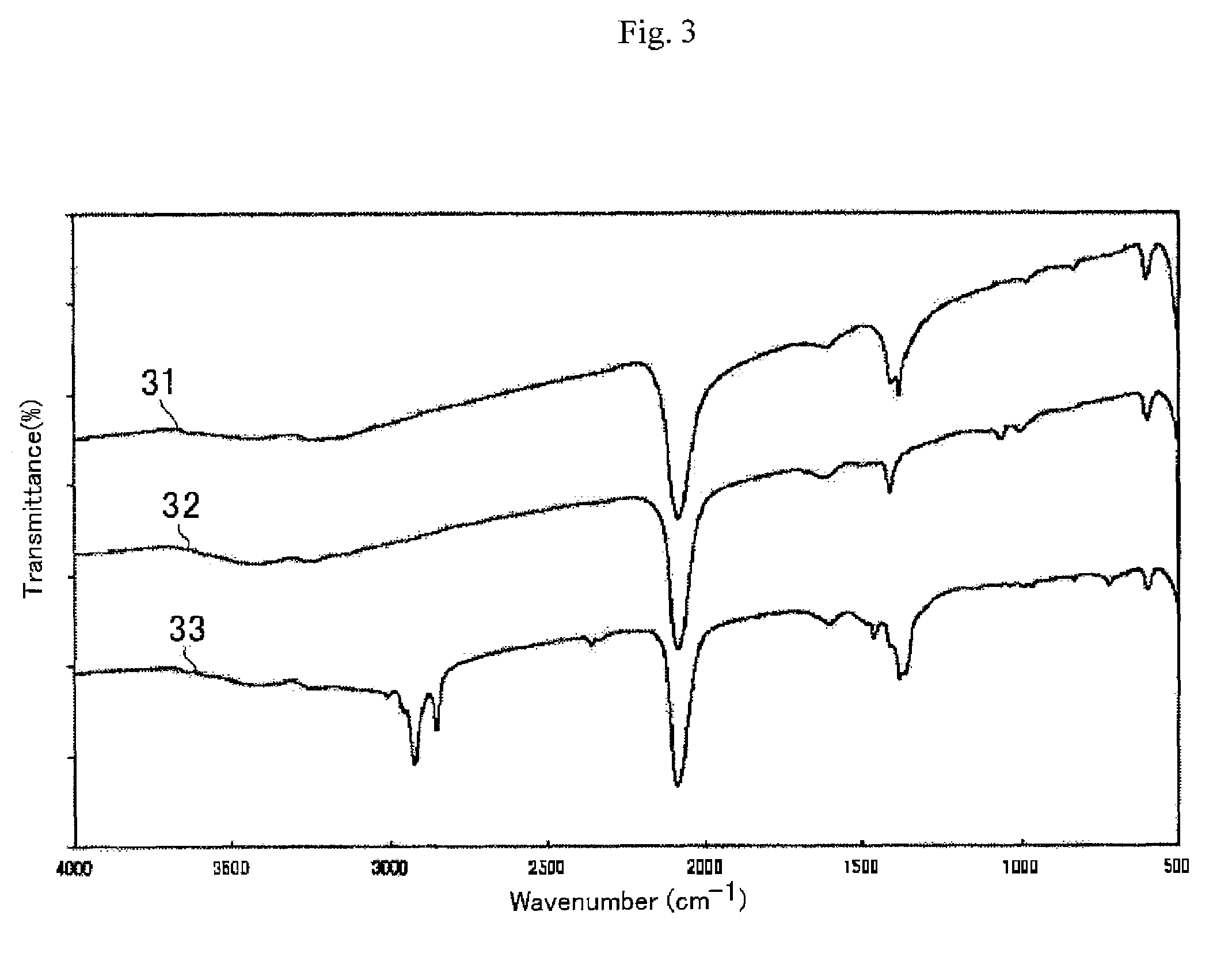Ultrafine particles of Prussian blue-type metal complex, dispersion liquid thereof and their production methods
a technology of blue-type metal complexes and dispersion liquids, which is applied in the direction of complex cyanides, cellulosic plastic layered products, instruments, etc., can solve the problems of high price of stabilizing molecules, inconvenient mass production, and high cost of stabilizing molecules, so as to achieve easy mass production, high purity, and high stability
- Summary
- Abstract
- Description
- Claims
- Application Information
AI Technical Summary
Benefits of technology
Problems solved by technology
Method used
Image
Examples
example 1
[0085]Aqueous solutions of FeIII(NO3)3.9H2O (1.4 g) and (NH4)4[FeII(CN)6] (1.0 g) were mixed to yield insoluble Prussian blue superfine crystals of the general formula, FeIII4[FeII(CN)6]3.nH2O which may be the other formula, (NH4)xFeIIy[FeIII(CN)6]x.nH2O, contained ammonium ions. The resulting blue powder was centrifuged, washed with water three times and with methanol twice, and dried under reduced pressure.
[0086]The powder X-ray diffraction (XRD) pattern of the obtained blue powder (FIG. 2(II), curve 21) is consistent with that of the standard sample of Prussian blue on XRD data (FIG. 2(I)). In the FT-IR spectrum of the powder, the specific absorption at 2070 cm−1 is ascribable to a CN stretching band of the Fe(II)-CN—Fe(III) coordination bond, as shown in FIG. 3 (curve 31). Based on these results, the obtained blue powder is Prussian blue.
[0087]Into a toluene solution (5 ml) of oleylamine (0.17 g) with a long aliphatic chain as the ligand, L, water (0.5 ml) and then the insoluble...
example 2
[0091]The insoluble PB powder was obtained by the same procedures in the Example 1. Into a solution (5 ml) of 2-aminoethanol (0.040 g) as the ligand, L, the insoluble PB blue powder (0.2 g) was added, and the resulting mixture was stirred for 3 hours to generate the superfine particles of Prussian blue. After the reaction period being stirring, the superfine particles of the Prussian blue were suspended in the methanol solution without their stable dispersion to afford a blue solution. The FT-IR spectrum of the superfine particles of the Prussian blue is shown in FIG. 3 (curve 32).
[0092]By removing the methanol solvent with filtration, the superfine particles of the Prussian blue were separated as a solid blue powder (solid sample α). All of the solid sample α can be dispersed into water to generate a deep blue transparent aqueous solution (solution sample β). The superfine particles of the Prussian blue with the 10-15 nm diameter in the solution sample β were confirmed from the TEM...
example 3
[0094]Into a mixture of an aqueous solution (1.5 ml) of K3[Fe(CN)6] (0.3289 g, 0.9990 mmol) and a 28% ammonia water (0.1 ml), an aqueous solution (1.0 ml) of Co(NO3)2.6H2O (0.4369 g, 1.501 mmol) was added, and the reaction mixture was stirred for 3 minutes. The resulting insoluble red precipitate was centrifuged, washed with water three times and with methanol once to yield 0.6308 g of a red powder as a Prussian blue (PB) analogue (cobalt hexacyanoferrate), KxCoy[Fe(CN)6]x.mNH3.nH2O.
[0095]Into a suspension of water (0.5 ml) and the cobalt hexacyanoferrate (0.2040 g (0.3396 mol), a toluene solution (3.0 ml) of oleylamine (0.4433 g (1.657 mmol) was added, and the reaction mixture was stirred for 1 day. Thus, the insoluble cobalt hexacyanoferrate was eluted into the toluene layer as dispersible nanoparticles to yield a solution sample γ
[0096]After evaporation of the solution sample γ containing the superfine particles of the cobalt hexacyanoferrate to dryness, a red solid sample was ob...
PUM
| Property | Measurement | Unit |
|---|---|---|
| particle diameter | aaaaa | aaaaa |
| size | aaaaa | aaaaa |
| size | aaaaa | aaaaa |
Abstract
Description
Claims
Application Information
 Login to View More
Login to View More - R&D
- Intellectual Property
- Life Sciences
- Materials
- Tech Scout
- Unparalleled Data Quality
- Higher Quality Content
- 60% Fewer Hallucinations
Browse by: Latest US Patents, China's latest patents, Technical Efficacy Thesaurus, Application Domain, Technology Topic, Popular Technical Reports.
© 2025 PatSnap. All rights reserved.Legal|Privacy policy|Modern Slavery Act Transparency Statement|Sitemap|About US| Contact US: help@patsnap.com



